|
Speleological
expedition „Lukina
jama 2010“
Text: Luka Mudronja, Dalibor Paar and Marko Lukić. Translated by Dina
Kovač.
SUMMARY
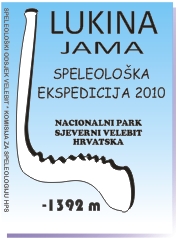 Speleological
expedition „Lukina jama 2010“ was held between 24th of July and 15th of
August 2010. It was organized by Speleological section Velebit and the
Speleological Committee of the Croatian Mountaineering Association in
cooperation with Northern Velebit National Park, with logistic support
of The Croatian Mountain Rescue Service (CMRS). Around hundred of
speleologists from 14 Croatian speleological clubs and associations
participated in the expedition as well as colleagues from Bulgaria,
England, Slovakia, Czech Republic and Spain. This was one of this year’s
most challenging expeditions in Europe given the logistics and large
amounts of equipment transported to the bottom of the pit in conditions
of low temperature and significant water activity. The expedition
resulted in cave diving in the lake at the bottom of the pit, in new
speleological topographical maps and scientific research which includes
studies of the subterranean fauna, hydrogeology, physical, chemical
properties and other characteristics of the pit. Cave divers and members
of the Speleological section Velebit as well as CMRS, Ivica Ćukušić and
Robert Erhardt, dived into the submerged passage at the bottom of the
dry part of the pit for 135 m in length and 21 m in depth, increasing
the overall cave depth to 1400 m and more. During the expedition, well
known Croatian cave diver and member of Speleological section of HPD
Željezničar as well as Croatian Biospeleological Society (CBSS), Branko
Jalžić, dived into the submerged passage at the bottom of the pit at 40
m in depth. New overall cave depth is now 1421 m, which makes it the
15th deepest cave in the world. Speleological
expedition „Lukina jama 2010“ was held between 24th of July and 15th of
August 2010. It was organized by Speleological section Velebit and the
Speleological Committee of the Croatian Mountaineering Association in
cooperation with Northern Velebit National Park, with logistic support
of The Croatian Mountain Rescue Service (CMRS). Around hundred of
speleologists from 14 Croatian speleological clubs and associations
participated in the expedition as well as colleagues from Bulgaria,
England, Slovakia, Czech Republic and Spain. This was one of this year’s
most challenging expeditions in Europe given the logistics and large
amounts of equipment transported to the bottom of the pit in conditions
of low temperature and significant water activity. The expedition
resulted in cave diving in the lake at the bottom of the pit, in new
speleological topographical maps and scientific research which includes
studies of the subterranean fauna, hydrogeology, physical, chemical
properties and other characteristics of the pit. Cave divers and members
of the Speleological section Velebit as well as CMRS, Ivica Ćukušić and
Robert Erhardt, dived into the submerged passage at the bottom of the
dry part of the pit for 135 m in length and 21 m in depth, increasing
the overall cave depth to 1400 m and more. During the expedition, well
known Croatian cave diver and member of Speleological section of HPD
Željezničar as well as Croatian Biospeleological Society (CBSS), Branko
Jalžić, dived into the submerged passage at the bottom of the pit at 40
m in depth. New overall cave depth is now 1421 m, which makes it the
15th deepest cave in the world.
INTRODUCTION
Croatia has number of extremely vertical caves and pits, which require
multi-year research in form of expeditions. Lukina jama is situated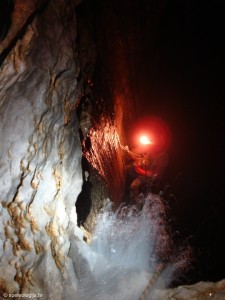 in the area of Hajdučki kukovi in Northern Velebit National Park and it
is the deepest Croatian cave from 1993 until today. Its depth was
increased during this expedition to -1241 m, which, according to data
from October 2010, makes it the 15th deepest cave in the world. Although
the widely accepted name is Lukina jama, this is actually a cave system
Lukina jama-Trojama. This year the entrance was closed with snow and ice
at a depth of around 70 m. This condition, which is not consistent with
the trends of global warming, has been going on for years, unlike to the
nineties period from the last century, when the entrance was passable.
The second 37 m higher Trojama entrance (located at 1475 m altitude) was
passable, so this year's expedition took place through it. Speleological
expedition “Lukina jama 2010” had several goals: speleological research,
especially cave diving in the siphon-lake at the bottom of the pit, new
topographic speleological maps and scientific research which includes
studies of the subterranean fauna, hydrogeology, physical, chemical
properties and other characteristics of the pit. Some measurements were
conducted during the expedition, while part of them will be taken during
the following year by setting up monitoring devices for hydrological,
microclimate and other parameters (on the right photo: water flow in
Lukina jama at around -1200 m in depth, photo by A. Bakšić). Deep pits
of Velebit provide excellent way of gathering new insights on the
geology of Velebit, hydrology of karst underground and on natural wealth
such as the endemic subterranean fauna. Therefore, the aim of scientific
research is to gather as much information on the properties and
characteristics of deep pits.
in the area of Hajdučki kukovi in Northern Velebit National Park and it
is the deepest Croatian cave from 1993 until today. Its depth was
increased during this expedition to -1241 m, which, according to data
from October 2010, makes it the 15th deepest cave in the world. Although
the widely accepted name is Lukina jama, this is actually a cave system
Lukina jama-Trojama. This year the entrance was closed with snow and ice
at a depth of around 70 m. This condition, which is not consistent with
the trends of global warming, has been going on for years, unlike to the
nineties period from the last century, when the entrance was passable.
The second 37 m higher Trojama entrance (located at 1475 m altitude) was
passable, so this year's expedition took place through it. Speleological
expedition “Lukina jama 2010” had several goals: speleological research,
especially cave diving in the siphon-lake at the bottom of the pit, new
topographic speleological maps and scientific research which includes
studies of the subterranean fauna, hydrogeology, physical, chemical
properties and other characteristics of the pit. Some measurements were
conducted during the expedition, while part of them will be taken during
the following year by setting up monitoring devices for hydrological,
microclimate and other parameters (on the right photo: water flow in
Lukina jama at around -1200 m in depth, photo by A. Bakšić). Deep pits
of Velebit provide excellent way of gathering new insights on the
geology of Velebit, hydrology of karst underground and on natural wealth
such as the endemic subterranean fauna. Therefore, the aim of scientific
research is to gather as much information on the properties and
characteristics of deep pits.
SPELEOLOGICAL RESEARCH
Speleological research of deep pits requires a teamwork of a number
of excellent trained speleologists, since the complex conditions require
a good knowledge of speleological techniques, from techniques on
movement through the underground and organizing underground expeditions
to speleological topographic mapping (precision according to the
criteria of the International Union of Speleology: UISv1 5-4-BCF).
Speleological research in the speleological expedition “Lukina jama
2010” was conducted under the leadership of Luka Mudronja by around
hundred of cavers from 14 Croatian speleological clubs and associations
and in cooperation with the colleagues from Bulgaria, England, Slovakia,
Czech Republic and Spain. Each participant gave a valuable contribution
to the expedition through various activities, including setting up the
pit for further movement and research, demanding equipment transport for
cave diving research, cave diving in the lake / siphon at a depth of
1368 m, speleological topographical mapping, production of photo and
video documentation, assistance in the scientific research of the pit as
well as logistic support at the ground surface. A part of every
expedition is a detailed survey of the field, exploring new entrances to
the cave as well as possible new perspectives in a new found
speleological object.
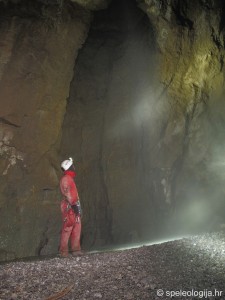
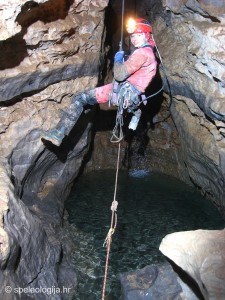
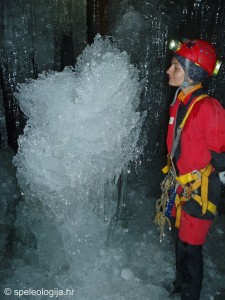
Photo by D.Bakšić, M.Glušević and D.Paar
The focus of this year's expedition was directed to the bottom of the
pit, where it was attempted to determine whether lake/siphon at the
bottom of the dry part of the pit at 1368 m depth represents a hanging
siphon or part of karstic aquifer. The only dive in that siphone was
conducted by cave divers Zoran Stipetić-Patak and Teo Barišić in 1994.
They dived 57 m in length and 6 m in depth which was the deepest cave
dive in the world.
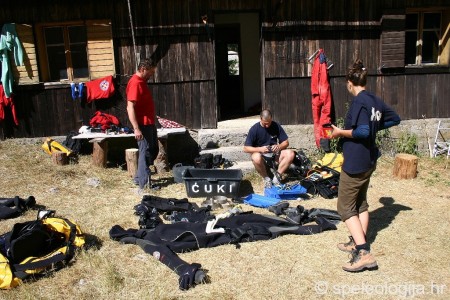
Robert Erhardt and Ivica Ćukušić are preparing the equipment for diving
in Lukina jama. Photo: D. Paar
With the first dive at this year's expedition, Ivica Ćukušić and Robert
Erhardt dived into the submerged passage of 135 m in length and 21 m in
depth, which increased the overall cave depth to over 1400 m. With the
second dive, Branko Jalžić reached 40 m in depth where he stopped in a
vertical passage which continues to go down. Jalžić stopped at the 54 m
altitude and given the cave morphology, there is a possibility to reach
the sea level in future research. These results suggest that the level
of the lake at the bottom of the dry part of the pit corresponds to the
level of the karst aquifer and therefore the level of ground waters in
this part of Velebit’s underground. This great depth of the karst
aquifer is expected due to the karst properties of dissolution porosity,
typical for soluble carbonate rocks.
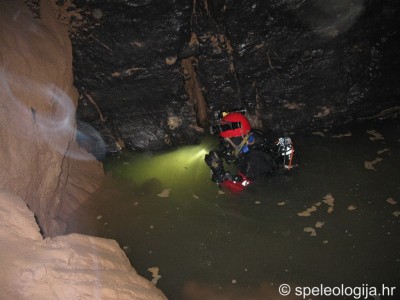
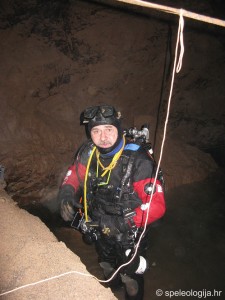
Branko Jalžić in the lake at the bottom of the dry part of the pit,
where he dived 40 in depth. Photo: B. Jalžić’s transport team
PHYSICAL, CHEMICAL AND HYDROGEOLOGICAL RESEARCH
The main objective of physical, chemical and hydrogeological research
in the pit was gathering information on the properties and dynamics of
water and air. Special emphasis was put on water chemistry analysis, as
well as on microclimate parameters, radioactive radon and carbon dioxide
concentrations measurements. The air temperature in the pit ranges from
0 °C in the upper part of the cave where permanent snow and ice are
noted, to 5 °C at a depth of 1368 m next to lake/siphon. The cave is
characterized by vertical dynamics of water up to the point of where it
reaches the lake, and the water temperature in the upper part of the pit
is extremely low. For instance, at a depth of around 300 m, the water
temperature is only 0.6 oC. In the lake at the bottom of the pit, the
water temperature is almost the same as the air temperature, slightly
below 5 °C. The measured concentration of carbon dioxide is relatively
low through the entire pit, considerably lower than in some other
speleological objects in Croatia, where the measured values were more
than ten times higher.
Studies have shown that the air flow in the pit depends significantly on
the changes in the climate conditions at the ground surface and in the
water dynamics in the pit. By measuring the parameters, the correlation
between the dynamics of water, the air flow and the water and air
temperature was established. One of the aims of the research is to
determine the origin and dynamics of water in the underground, and the
meteor water contribution and dynamics transport to ground waters of
karst aquifer. This processes are responsible for restoring water in the
karst aquifer. By placing the appropriate measuring instruments, the
water level wil be monitored in the lake at -1368 m and in the area at
-980 m.
Andrej Stroj (Croatian Geological Survey), Vanja Radolić (Department of
Physics, University of Osijek), Nenad Buzjak (Department of Geography,
Faculty of Science in Zagreb), Magdalena Ujević Bošnjak (Croatian
National Institute of Public Health), Darko Bakšić (Faculty of Forestry,
Zagreb), Damir Lacković (Croatian Natural History Museum) and Dalibor
Paar (Department of Physics, Faculty of Science, Zagreb) participated in
the research.
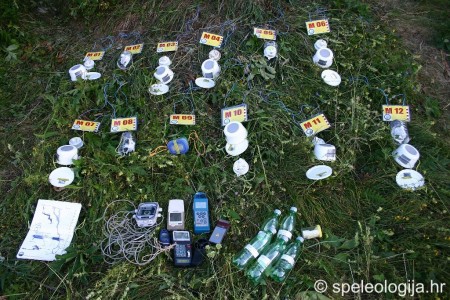
Instruments for physical and chemical measurements in the pit. Photo: D.
Paar
BIOSPELEOLOGICAL RESEARCH
Biospeleological research in Lukina jama was conducted by members of
the CBSS: Marko Lukić, Jana Bedek and Branko Jalžić. Ruđer Novak
collected samples for microbiological testing. Thanks to a long research
period of six days spent in the cave, new and rare cave species were
recorded, primarily terrestrial isopods (Isopoda terrestria) and
springtails (Collembola). Specimens of terrestrial isopods were noted in
specific habitat, and therefore probably represent first specimens with
special adaptations for living and feeding on a cave hygropetric and wet
rocks.
Five different species of springtails were recorded, including one new
species and probably one new genus. Among other things, an arachnid was
found (Palipgrada group) which is the first record of this group in the
fauna of the deep pits of North Velebit.
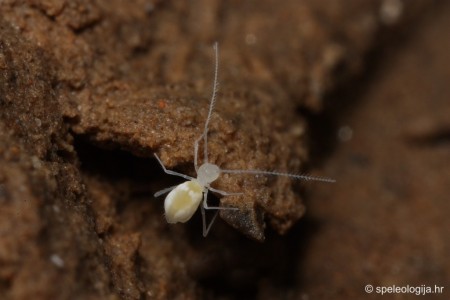
Galeriella sp. nov. Photo by M.Lukić
During the cave diving explorations at depths between 1368 and 1421
m, aquatic cave fauna was also studied. Critically endangered cave-dwelling
bivalve Congeria kusceri, tube worm Marifugia cavatica and an
underground cave sponge waiting for further analysis were found.
Rich cave fauna was sampled in a small number of specimens due to
specific habitat conditions and size of populations that inhabit certain
micro localities. Collected biological material is being further
analysed by the experts on different groups of invertebrates. Given the
small number of collected specimens collected before the description of
new species and genera, further studies are required in the cave, as
well as collecting additional material for morphological and DNA
analysis.
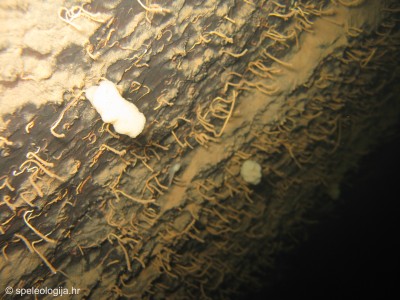
Cave tube worm Marifugia cavatica and an underground cave sponge in a
lake at the bottom of the pit. Photo by: B. Jalžić
►
Photo gallery
List of participants
|
|
|
Club/Country |
Depth in Lukina jama |
|
Alen |
Kušćar |
SU Kraševski zviri,
Ivanec |
|
|
Mario |
Musulin |
SU Kraševski zviri,
Ivanec |
1368 |
|
Flip |
Bach |
SO Liburnija HPD
Paklenica, Zadar |
780 |
|
Javor |
Bach |
SO Liburnija HPD
Paklenica, Zadar |
|
|
Ana |
Katalinić |
SO Liburnija HPD
Paklenica, Zadar |
|
|
Goran |
Rnjak |
SO HPK Sv. Mihovil,
Šibenik |
1368 |
|
Željko |
Vukušić |
SO PD Promina, Drniš |
|
|
Marin |
Glušević |
SO HPD Mosor, Split |
1368 |
|
Nestija |
Juretić |
SO HPD Mosor, Split |
|
|
Danijel |
Krstulović-Opara |
SO HPD Mosor, Split |
1005 |
|
Ivan |
Limić |
SO HPD Mosor, Split |
780 |
|
Marina |
Maleš |
SO HPD Mosor, Split |
|
|
Ante |
Markoč |
SO HPD Mosor, Split |
|
|
Davor |
Matić |
SO HPD Mosor, Split |
|
|
Katja |
Milišić |
SO HPD Mosor, Split |
1368 |
|
Vinko |
Prizmić |
SO HPD Mosor, Split |
|
|
Maja |
Prizmić |
SO HPD Mosor, Split |
|
|
Mirta |
Prizmić |
SO HPD Mosor, Split |
|
|
Petra |
Prizmić |
SO HPD Mosor, Split |
|
|
Krešimir |
Prskalo |
SO HPD Mosor, Split |
1005 |
|
Filio |
Trgo |
SO HPD Mosor, Split |
1005 |
|
Dragan |
Vujnović |
SO HPD Mosor, Split |
|
|
Davor |
Cvitanić |
SO PD Profunda, Selca |
|
|
Zoran |
Ateljević |
SO PD Sniježnica,
Cavtat |
1368 |
|
Lazar |
Badanjac |
SO PD Sniježnica,
Cavtat |
1368 |
|
Mario |
Begić |
SO PD Sniježnica,
Cavtat |
|
|
Đuro |
Mileusnić |
SO PD Sniježnica,
Cavtat |
1368 |
|
Tomislav |
Bajo |
SO PDS Velebit, Zagreb |
981 |
|
Darko |
Bakšić |
SO PDS Velebit, Zagreb |
1368 |
|
Ana |
Bakšić |
SO PDS Velebit, Zagreb |
1368 |
|
Ida |
Belaš |
SO PDS Velebit, Zagreb |
350 |
|
Slaven |
Boban |
SO PDS Velebit, Zagreb |
1368 |
|
Tihana |
Boban |
SO PDS Velebit, Zagreb |
780 |
|
Toma Vuk |
Boban |
SO PDS Velebit, Zagreb |
|
|
Bernarda |
Boban Paar |
SO PDS Velebit, Zagreb |
|
|
Katarina |
Bradić |
SO PDS Velebit, Zagreb |
|
|
Matija |
Čepelak |
SO PDS Velebit, Zagreb |
1368 |
|
Lovro |
Čepelak |
SO PDS Velebit, Zagreb |
|
|
Tamara |
Čuković |
SO PDS Velebit, Zagreb |
450 |
|
Ivica |
Ćukušić |
SO PDS Velebit, Zagreb |
1401 |
|
Anđela |
Ćukušić |
SO PDS Velebit, Zagreb |
|
|
Robert |
Erhadt |
SO PDS Velebit, Zagreb |
1401 |
|
Vedran |
Ferenčak |
SO PDS Velebit, Zagreb |
350 |
|
Filip |
Filipović |
SO PDS Velebit, Zagreb |
1368 |
|
Aleksandar |
Hadeljan |
SO PDS Velebit, Zagreb |
|
|
Dino |
Huzanić-Mišek |
SO PDS Velebit, Zagreb |
450 |
|
Ana |
Komerički |
SO PDS Velebit, Zagreb |
780 |
|
Đuro |
Kuzmilović |
SO PDS Velebit, Zagreb |
|
|
Marinko |
Malenica |
SO PDS Velebit, Zagreb |
1368 |
|
Marta |
Malenica |
SO PDS Velebit, Zagreb |
981 |
|
Marijan |
Marović |
SO PDS Velebit, Zagreb |
|
|
Luka |
Mudronja |
SO PDS Velebit, Zagreb |
1368 |
|
Marinko |
Mustapić |
SO PDS Velebit, Zagreb |
|
|
Dalibor |
Paar |
SO PDS Velebit, Zagreb |
1368 |
|
Miljenko |
Puzek |
SO PDS Velebit, Zagreb |
|
|
Ivica |
Radić |
SO PDS Velebit, Zagreb |
1368 |
|
Marija |
Repanić |
SO PDS Velebit, Zagreb |
|
|
Andrej |
Stroj |
SO PDS Velebit, Zagreb |
1368 |
|
Darija |
Šarić |
SO PDS Velebit, Zagreb |
|
|
Nikola |
Šoić |
SO PDS Velebit, Zagreb |
|
|
Iva |
Štefan |
SO PDS Velebit, Zagreb |
|
|
Darko |
Troha |
SO PDS Velebit, Zagreb |
1368 |
|
Vesna |
Troha |
SO PDS Velebit, Zagreb |
|
|
Dora |
Troha |
SO PDS Velebit, Zagreb |
|
|
Sven |
Troha |
SO PDS Velebit, Zagreb |
|
|
Ivan |
Turčin |
SO PDS Velebit, Zagreb |
1005 |
|
Ena |
Vrbek |
SO PDS Velebit, Zagreb |
1368 |
|
Ronald |
Železnjak |
SO PDS Velebit, Zagreb |
1368 |
|
Jasna |
Železnjak |
SO PDS Velebit, Zagreb |
|
|
Anja |
Žmegač |
SO PDS Velebit, Zagreb |
|
|
Bernard |
Bregar |
SO HPD Željezničar,
Zagreb |
1368 |
|
Ivan |
Mišur |
SO HPD Željezničar,
Zagreb |
1368 |
|
Ruđer |
Novak |
SO HPD Željezničar,
Zagreb |
1368 |
|
Inga |
Patarčić |
SO HPD Željezničar,
Zagreb |
1368 |
|
Igor |
Markanjević |
SU Estavela, Kastav |
981 |
|
Jana |
Bedek |
HBSD / SO PDS Velebit,
Zagreb |
1368 |
|
Branko |
Jalžić |
HBSD / SO Željezničar,
Zagreb |
1421 |
|
Alen |
Kirin |
HBSD, Zagreb |
1368 |
|
Marko |
Lukić |
HBSD / SO PDS Velebit,
Zagreb |
1368 |
|
Neven |
Galant |
SD Istra, Pazin |
1368 |
|
Patar |
Matika |
SD Istra, Pazin |
1368 |
|
Danijel |
Frleta |
Riječki alpinistički
klub, Rijeka |
1368 |
|
Sanjin |
Gotić |
Riječki alpinistički
klub, Rijeka |
|
|
Marko |
Grgačević |
SU "RI" Rijeka |
1368 |
|
Marija |
Bašić |
SD Špiljar, Split |
|
|
Ivo |
Dokoza |
SD Špiljar, Split |
|
|
Frane |
Kožemelj |
SD Špiljar, Split |
|
|
Encho Yordanov |
Enchev |
Bugarska |
1368 |
|
Vladimir |
Georgiev |
Bugarska |
1368 |
|
Yavor Petkov |
Tsvetanov |
Bugarska |
1368 |
|
Antonia Stoyanova |
Vlaykova |
Bugarska |
1368 |
|
Oldrich |
Štos |
Češka |
1368 |
|
Fleur Alice |
Loveridge |
Engleska |
1368 |
|
Tony |
Seddon |
Engleska |
1368 |
|
Peter John |
Talling |
Engleska |
1368 |
|
Gablijel |
Jakab |
Slovačka |
981 |
|
Erik |
Kapucijan |
Slovačka |
1368 |
|
Branislav |
Šmida |
Slovačka |
|
|
Stefan |
Šuster |
Slovačka |
1368 |
|
Milan |
Šuster |
Slovačka |
1368 |
|
Roman |
Bergelj |
Slovenija |
|
|
Marko |
Erker |
Slovenija |
350 |
|
Vesna |
Hrdlička Bergelj |
Slovenija |
350 |
|
Pepe Molero |
Dominguez |
Španjolska |
|
|
Jose Pardo |
Jurado |
Španjolska |
|
|
Miguel Gomez |
Labat |
Španjolska |
|
|
Sebastian Jimenes |
Lopez |
Španjolska |
|
|
Grozav |
Nicolae |
Španjolska |
|
|
Rafael Bernabe |
Perez |
Španjolska |
|
|
Jose Morillas |
Villanueva |
Španjolska |
|
References
Bajo, P., Stroj, A., Paar, D., Ujević, M., Bakšić, D., Lacković, D.,
Čop, A., Radolić, V. (2009): Results of exploring the Munižaba cave
(Velebit, Croatia) with special reference to measurements of physico-chemical
and microclimatic parameters /17th International Karstological School "Classical
Karst". Gabrovšek, F., Mihevc, A. (ur.). Postojna. IZRK ZRC SAZU,
51.
Bakšić, D. i sur. (2002): Inventarizacija speleoloških objekata
Nacionalnog parka Sjeverni Velebit (I faza), izvješće, SO PDS Velebit,
85.
Bakšić, D. i sur. (2006): Speleološka ekspedicija „Lukina jama –
Lubuška jama 2006“, izvješće, SO PDS Velebit
Bakšić, D. & Paar, D., (2006): Croatia and the Deep Caves of Northern
Velebit. Alpine Karst, vol 2., ed. J. & T. Oliphant, 105-124, Cave books,
Dayton, USA.
Bakšić, D. i sur.(2010): Lukina jama. Hrvatski speleološki poslužitelj,
http://www.speleologija.hr/lukinajama
Barišić, T. (1994): Ronjenje u Lukinoj jami, Velebiten, br 16, str.
27-29, Zagreb
Bradić, K.; Hadeljan, A.; Bajo, P.; Paar, D. (2010): The role of
speleological explorations in cave protection in Dinaric karst (Croatia)
// 18th International Karstological School "Classical Karst" - Dinaric
Karst / Mihevc, A. ; Prelovšek, M. ; Zupan Hajna, N. (ur.).
Postojna : Karst Research Institute, Scientific Research Centre of the
Slovenian Academy of Sciences and Arts, 2010. 22-22.
Buzjak, Nenad; Paar, Dalibor (2009): Recent cave microclimate
research in Croatia. 17th International Karstological School "Classical
Karst" Abstracts / Gabrovšek, Franci ; Mihevc, Andrej (ur.). Postojna :
IZRK ZRC SAZU, 53-53.
Buzjak, N.; Paar, D.; Bakšić, D. (2010): Some characteristics of ice and
snow caves in Croatia // 4th International Workshop on Ice Caves.
Abstract Volume / Spötl, Christoph ; Lütscher, Marc ; Rittig, Patricia (ur.).
Wien, 2010. 8-9.
Furtak, M. (2001): -500 m w Lubuskej Jamie - Chorwacja 2001, Jaskinie,
br. 4 (25), Krakow
Furtak, M. & Pilecki, P. (2001): Przez mendry do glebin, Jaskinie, 1
(22), str. 10-13
Kuhta, M. i sur. (2002): Inventarizacija speleoleoških objekata na
području Nacionalnog parka Sjeverni Velebit, izvješće, SO HPD
Željezničar, 51 str.
Kuhta, M. & Bakšić, D., (2001): Karstification Dynamics and Development
of the Deep Caves on the North Velebit Mt. – Croatia. 13th Internatinal
Congress of Speleology, 1-4, Brazil.
Malenica, M.; Čukušić, A.; Lacković, D.; Stroj, A.; Paar, D. (2010):
Speleological explorations and geomorphological properties of deep pits
in Croatia // 18th International Karstological School "Classical Karst"
- Dinaric Karst / Mihevc, A. ; Prelovšek, M. ; Zupan Hajna, N. (ur.).
Postojna : Karst Research Institute, Scientific Research Centre of the
Slovenian Academy of Sciences and Arts, 39.
Paar, D., Ujević, M, Bakšić, D., Lacković, D., Čop, A., Radolić, V.
(2008): Physical and Chemical Research in Velebita pit (Croatia). Acta
carsologica. 37, 2-3; 273-278.
Paar, D., Radolić, V., Lacković, D.; Buzjak, N., Čop, A.,; Bakšić, D.
(2009): Radon concentration measurements on Mt.Velebit and Mt.Žumberak
(Croatia). 17th International Karstological School "Classical Karst".
Gabrovšek, F. ; Mihevc, A. (ur.). Postojna : IZRK ZRC SAZU, 78-78.
Paar, D.; Bakšić, D.; Radolić, V.; Lacković, D.; Ujević, M. (2010): Deep
pit in Dinaric karst as underground laboratory // 18th International
Karstological School "Classical Karst" - Dinaric Karst / Mihevc, A. ;
Prelovšek, M. ; Zupan Hajna, N. (ur.). Postojna : Karst Research
Institute, Scientific Research Centre of the Slovenian Academy of
Sciences and Arts, 49.
Šmida, B. i sur. (1999): Velebit – Reportaž z objavovania hlbokych
priepasti Chorvatska v rokoch 1990 – 1998 ( Velebit – Izvješće o
istraživanjima dubokih jama Hrvatske od 1990 – 1998 godine), Slovenska
speleologicka spoločnost, Prešov, str. 118
Šmida, B. (1997): Kako je bila otkrivena Lukina jama, Velebiten br.
24, str. 1-5, Zagreb
Šmida, B. (1997): Kako je bila otkrivena i istražena jama Manual II,
Velebiten br. 24, str. 5-9, Zagreb
Troha, D. (1993): Lukina jama - perspektive daljih istraživanja,
Velebiten, br. 13, str.1-4, Zagreb
Ujević, M., Paar, D., Bakšić, D. (2007-2010): Analiza vode u dubokim
jamama u Hrvatskoj, biti će publicirano.
 PUBLISHED: 27.10.2010. 16:43
PUBLISHED: 27.10.2010. 16:43
|
Members of the expedition
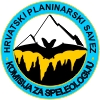
The Speleological Committee of the
Croatian Mountaineering Association
SU Kraševski zviri, Ivanec
SO Liburnija HPD Paklenica, Zadar
SO HPK Sv. Mihovil, Šibenik
SO HPD Mosor, Split
SO PD Profunda, Selca
SO PD Promina
Drniš
SO PD Sniježnica, Cavtat
SO PDS Velebit, Zagreb
SO HPD Željezničar, Zagreb
SU Estavela, Kastav
HBSD, Zagreb
SD Istra, Pazin
Riječki alpinistički klub, Rijeka
SD Špiljar, Split
SU "RI", Rijeka
HGSS
►
PHOTO
GALLERY



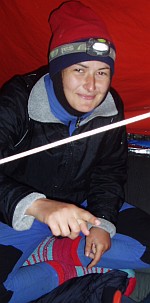
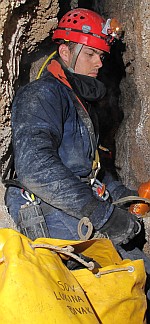
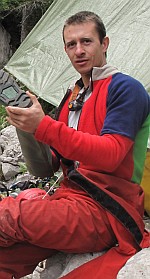
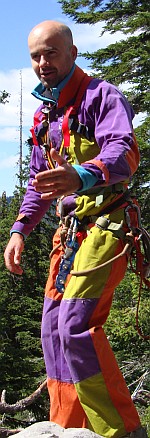

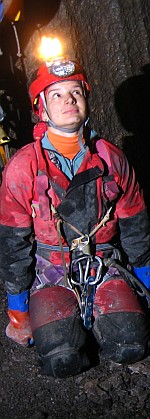
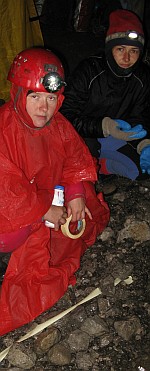
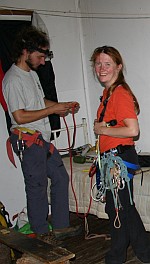
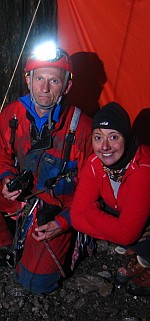
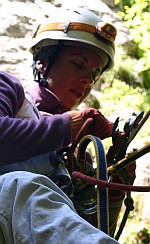
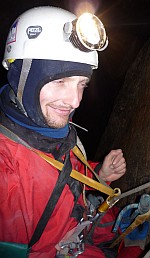
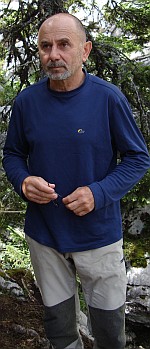
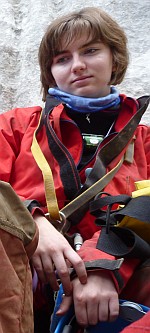
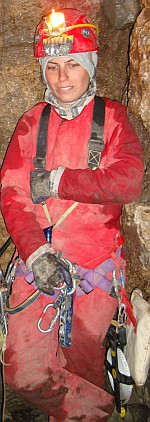
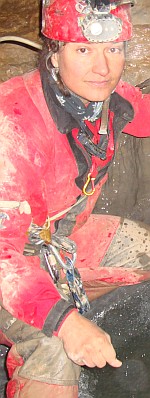
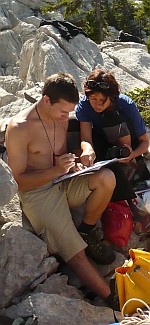
►
PHOTO GALLERY
|